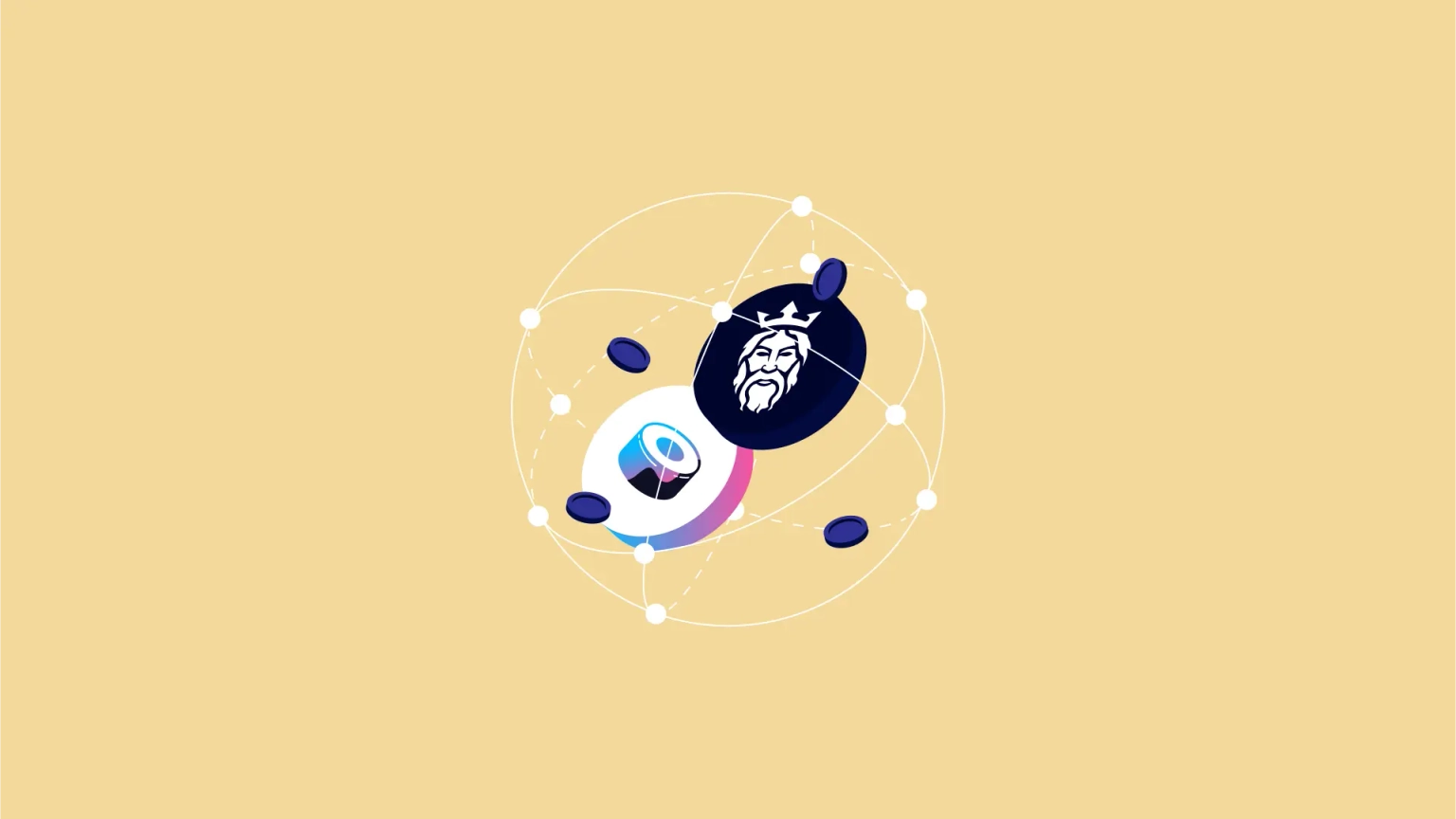
Collaboration between Neptune Mutual and SushiSwap
Explore Neptune Mutual's ongoing collaboration with SushiSwap offering several benefits.
Youtube Video
Playing the video that you've selected below in an iframe

Learn all about addressing interoperability with cross-chain, multichain, and omnichain.
Over time, we've seen a surge in blockchain ecosystems, including new foundational layers and Layer 2 solutions, each offering unique advantages. An essential aspect quickly emerged as a critical factor: interoperability, the ability for these diverse chains to transfer data and communicate with each other.
Interoperability among these chains became a necessity for opening networks to broader users and allowing them to leverage the strengths of multiple blockchains. This necessity gave birth to three innovative concepts: cross-chain, multichain, and omnichain.
Let's dive into the concepts of cross-chain, multichain, and omnichain to understand how they address interoperability in the blockchain world. First, let’s see what interoperability really means.
Blockchain interoperability is the ability of different blockchain networks to communicate and interact with each other. This interaction is not just a technical feature; it's a vital component in the blockchain landscape that has garnered significant attention in the decentralized world.
Interoperability's importance can be explained in the context of decentralized applications (dApps) that need to utilize multiple blockchain networks. For instance, in DeFi, users often wish to swap cryptocurrencies across different platforms. To facilitate such transactions, a DeFi application must be able to interact with the respective blockchains involved in the transaction. This need for cross-chain communication underscores the significance of interoperability.
In the past, the Ethereum network was the predominant force, holding over 95% of the Total Value Locked (TVL). However, interacting with other networks was a complex and resource-intensive process. The lack of interoperability not only made such interactions difficult but also hindered the growth and scalability of blockchain technology. This challenge posed by the limited interoperability sparked a search for solutions that could bridge this gap.
Several protocols and technologies have emerged to address the need for interoperability. Cross-chain bridges are specialized protocols enabling the transfer of assets and data between different blockchain networks. Similarly, atomic swaps allow exchanging cryptos from different blockchains without the need for intermediaries. And there are sidechains that can validate and read events on other chains.
The development of various blockchain networks can be traced back to the Blockchain Trilemma, which involves balancing security, decentralization, and scalability. It's a balancing act, where enhancing one aspect often means compromising on another.
Each blockchain network attempts to tackle this trilemma in its own unique way, leading to the creation of diverse ecosystems. However, this diversity brings forth the challenge of interoperability. Without effective communication between these networks, the full potential of blockchain technology cannot be realized.
Let's explore each element of this trilemma.
Scalability: Scalability refers to the ability of a blockchain network to handle a high volume of transactions efficiently. As blockchain usage grows, the need for networks to process and validate transactions quickly and effectively becomes crucial. Increasing scalability can sometimes lead to compromises in security or decentralization.
Decentralization: Decentralization is about distributing decision-making power away from a central authority to multiple nodes or participants in the network. It's the focus of blockchain technology, promoting a democratic and transparent ecosystem. Achieving high decentralization can sometimes reduce scalability, as each node in a distributed network must validate transactions, which can slow down the process.
Security: Blockchain security includes a full risk management system that makes sure transactions can be trusted through consensus mechanisms, cryptographic protocols, and the fact that the network is not centralized. However, bolstering security measures can sometimes affect scalability and decentralization.
To address the Trilemma, the blockchain community has developed Layer 2 solutions. Layer 2 networks such as Optimism, Arbitrum, Polygon, and many more are built on top of Layer 1 networks, inheriting their security and decentralization while using innovative technologies to improve scalability. These Layer 2 solutions significantly reduce transaction costs and enhance transactions per second, offering a partial resolution to the Trilemma.
Despite these advancements, the quest to perfectly adjust scalability, decentralization, and security continues. New blockchain networks are constantly being developed, each trying to solve the Trilemma in innovative ways. This leads to the need for interoperability, as these inherently different and previously unconnected networks must communicate and collaborate for a truly decentralized future.
Now, let’s move on to understanding the concepts of cross-chain, multichain, and omnichain.
Simply, Cross-chain technology refers to the mechanisms that enable two different blockchain networks to communicate and exchange information or assets. This technology is crucial in a blockchain environment that consists of numerous, isolated networks. It acts like a bridge, facilitating interoperability between blockchains that would otherwise operate in isolation.
Cross-chain bridges remove the need for manual processes like moving assets to different chains, saving you valuable time. Before there were cross-chain bridges, moving your tokens to another chain, for example, would require going through a centralized exchange, selling your initial tokens for buying the token supported in the destination chain, and then withdrawing the tokens from there. It's just a complicated process. With cross-chain bridges eliminating all those hassles, it reduces complexity, time, and potential costs.
Cross-chain technology typically employs 'bridges' that link different blockchains. These bridges can transfer data and assets, like cryptocurrency tokens, from one chain to another. They use various cryptographic methods and smart contracts to ensure secure and verifiable transactions between the blockchains.
Celer cBridge from Celer Network is a prominent player in the cross-chain bridging technology. It has support for 22 chains and 26 tokens.
There are three primary mechanisms for cross-chains to work. Let’s see them briefly.
Burn and Mint: In this mechanism, users burn or destroy their assets on the original blockchain to remove them from circulation. An equivalent amount of assets is minted on the new blockchain.
Lock and Mint: It involves locking assets in a smart contract on the original blockchain, and wrapped tokens are minted on the target blockchain with a 1:1 conversion ratio. When users wish to receive their original tokens, the wrapped tokens are burned, and the original assets are unlocked on the original chain.
Lock and Unlock: In this approach, users lock their assets on the first blockchain, which then enables them to unlock the same amount of assets from a liquidity pool on the target blockchain. This method allows for the movement of assets without creating or destroying them, maintaining a balance between the two chains.
The term 'multichain' can be understood in two contexts: multichain dApps and multichain networks. Each represents a unique approach to achieving blockchain interoperability and efficiency.
Multichain dApps are decentralized applications that operate across multiple blockchain networks. These dApps are not restricted to a single blockchain, allowing them to leverage the strengths of various networks. For instance, a multichain dApp might use one blockchain for faster transactions and another for better security features.
Basically, the multichain dApps are created to work with the same smart contract technology. For example, chains like Avalanche, Polygon, Fantom, and Ethereum are EVM (Ethereum Virtual Machine) compatible. So, multichain dApps can be created to work on these chains or other EVM-compatible chains.
Some examples of Multichain dApps include Avalanche, Hedgehog, Delio, Goldsky, Sigma Prime, BlockSec, deBridge, and so on.
A multichain network, also known as a modular blockchain, refers to a network architecture that incorporates various elements of different blockchains. This approach aims to combine the strengths of multiple networks, such as enhanced scalability from one blockchain and improved security from another, to create a more efficient and robust system.
Multichain networks, or modular blockchains, are crucial in solving the Blockchain Trilemma. By integrating various features from different blockchains, they attempt to provide a balanced solution that offers scalability, security, and decentralization. This structure allows for more flexibility and innovation in blockchain development.
While multichain dApps are useful for chains that operate under the same layer 1, it doesn’t go beyond that. What if you want to create an application for every base-layer network? The answer could be omnichain.
Omnichain refers to the idea of connecting all blockchain networks, irrespective of their underlying smart contract technology. This concept proposes creating an infrastructure layer (Layer 0) that acts as a universal connector for all blockchains.
It establishes a foundational layer that takes away the limitations of individual chains and enables different blockchains to interact without barriers. This approach can potentially lead to unprecedented levels of connectivity and functionality in the blockchain ecosystem.
The development of omnichain technology could revolutionize how blockchain networks operate, making the decentralized ecosystem more cohesive and efficient. By enabling all chains to connect and interact, Omnichain could pave the way for a truly interconnected and versatile blockchain landscape.
One significant example of omnichain protocol is an interoperability protocol called LayerZero. It’s utilized by several DeFi protocols like Stargate Finance to support token transfer among several L1s and L2s.
Neptune Mutual is a DeFi project we developed aiming to mitigate the risks inherent in the DeFi space. Our parametric insurance protocol allows users to purchase coverage for their funds and receive payouts automatically in case hacks or exploits occur.
For Neptune Mutual’s interoperability, we have chosen LayerZero and Celer Network, two popular interoperability services, for our cross-chain messaging needs. These protocols help us with fast, secure, and reliable bridging of NPM tokens, Neptune Mutual’s governance tokens.
We have a cover marketplace on Ethereum, Arbitrum, and BNB Smart Chain from which users can purchase cover policies. Projects looking to protect their dApps and community can create cover pools in the marketplace; just reach out to us through our contact page.